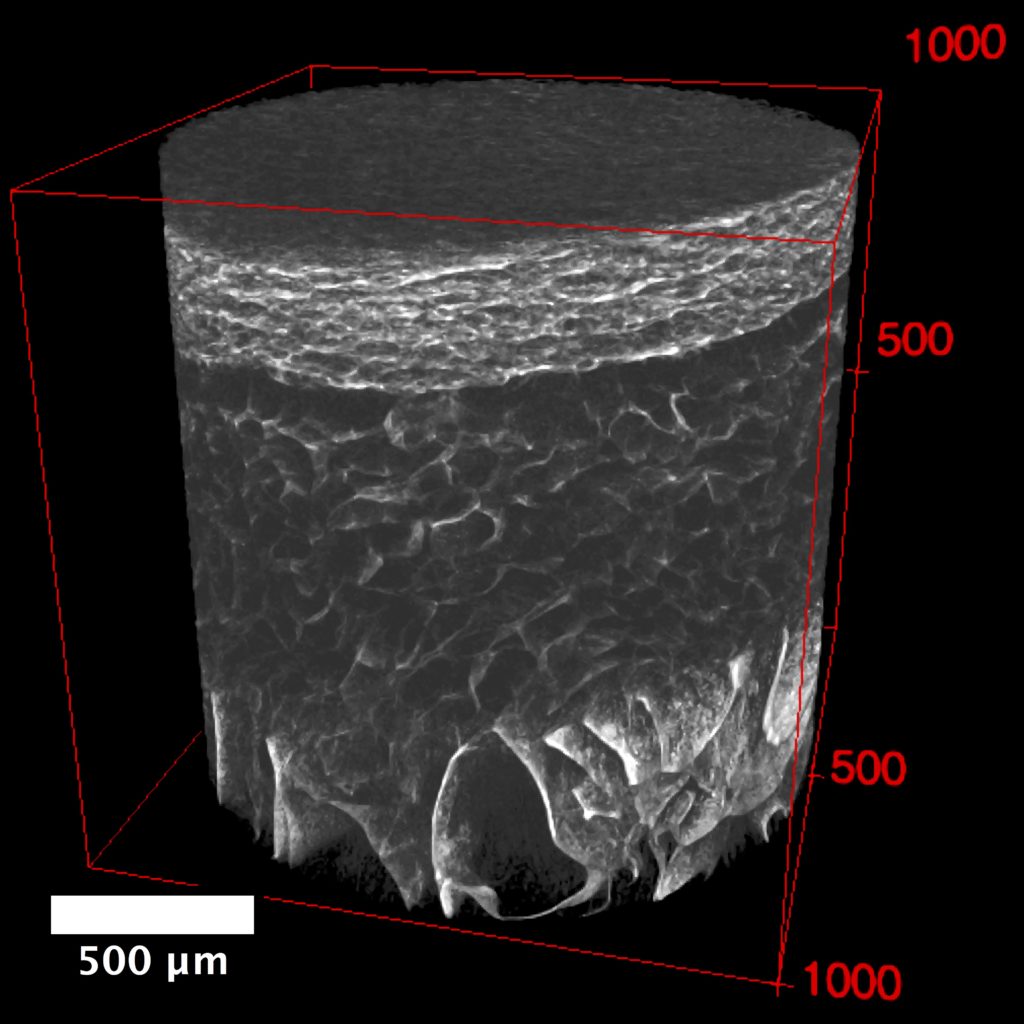Professor Wei Combines Her Two Passions in the Study of Biomaterials
By Amanda Olavarria
Some may view medicine and materials science as two distinct fields, but to Professor Wei they are closely related in her area of research, biomaterials. With an interest in the medical field and engineering, Wei found a way to implement both in her current career, while following the footsteps of her parents, who are both professors in materials science and engineering.
Professor Wei received her Ph.D. at the University of New South Wales, Australia in 1998 in materials science and engineering. She presently holds two positions at UConn, Professor and Associate Dean for Research and Graduate Education. Her responsibilities involve the areas of research management, academic mentorship, graduate education, and entrepreneurship. Currently, she is working towards implementing a Leadership Academy for graduate students with an aim to cultivate graduate leaders. She also works closely with Aida Ghiaei, Heidi Douglas of Engineering, Kay Gruder, and Lee Hameroff of UConn Career Development in the process of establishing a Mentor Network for Engineers platform. They will invite successful alumni back on campus to offer current graduate students advice on pursuing their careers.
Not only does Professor Wei offer her assistance to graduate students, but also faculty. She provides grant mentoring to new faculty, in which she explains how to write grants and helps faculty obtain matches for large grant proposals. In addition, Wei consistently checks in with female faculty members, since women are a minority in the field. She has one-on-one and group meetings with female faculty members to brainstorm various ways to recruit more women and improve retention rates. Although the percentage of female engineers has increased over the last couple years, Wei claims, they are still greatly outnumbered by men in the field.

Immunofluorescence of cell-deposited type 2 collagen matrix (green) laterally aligning with superficial zone scaffold pores (white) at day 21 of chondrocyte culture. Articular chondrocytes containing fluorescent reporters for type 2 collagen (blue) and type 10 collagen (red) are seen embedded in the type 2 collagen matrix.
Among Professor Wei’s many roles, she is also a devoted researcher. Her research involves biomaterials and tissue engineering for bone and cartilage repair. She works with a group of researchers on tissue engineering scaffolds, bone fixation devices, and biomedical coatings.
Specifically, her tissue engineering scaffold research can aid those involved in a car accident that lost a large chunk of bone. Professor Wei says, “For the tissue engineering scaffold, we tried to mimic the structure and composition of bone, and then incorporate biomolecules to enhance the bone formation in the bone repair and regeneration process.” According to Wei, this scaffold can serve as a grafting material to help bone reformation in the defective area and ultimately improve the patient’s quality of life. These advancements can also be helpful for an aging population with bone density problems.

Microcomputed tomographical rendering of multizonal scaffold, containing distinct regions that mimic the orientations of the superficial, transition, calcified cartilage, and osseous zones of osteochondral tissue.
Her second project in progress is a bone fixation device, which she does in collaboration with those in the polymer program and mechanical engineering. Normally, bone fixation devices use metals because of their high strength. However, they are too stiff compared to natural bone. To solve this problem, Professor Wei and her group are preparing a biodegradable composite made of silk fibers, which will be more flexible than metal and will be absorbed by the body once the bone heals.
The inspiration for this composite came from a protein that exists in silk fibers called silk fibroin, which is spun by spiders. This protein is well known for its strength and toughness, so Wei knew it was just the right material the group needed to incorporate in their composite. It consists of both long silk fibers and polylactic acid coated bioceramic particles made of hydroxyapatite, which is the calcium phosphate mineral found in teeth and bones.
People in the biomaterials community are currently working on similar composites. However, they are usually too weak, so they cannot be used in load-bearing situations. As of now, Professor Wei’s biodegradable composite can reach a high modulus of 18 GPa, which she hopes to improve even more in the future.
Professor Wei is also researching biomedical coatings. In biomaterials, metals are bioinert, meaning the body considers this material foreign. Therefore, the body will sometimes form a layer of fibrous tissue on the surface that prevents good integration with the bone. To avoid this, Wei’s group uses a bioactive coating to fool the body into accepting this material and thereby facilitate a strong bond with natural bone. The group produces this coating at room temperature, so the researchers can incorporate drugs and growth factors into the coating material to enhance the bone formation still further. “If the temperature is too high, proteins cannot be placed into the coating because the growth factors will degenerate at high temperatures,” Professor Wei claims.
Aside from her many research endeavors, Wei enjoys the exchange between her and her students in the classroom. A big part of her teaching style focuses on getting students involved. She enjoys asking her students a lot of questions and gaining feedback, rather than solely lecturing. Wei finds it very rewarding to see her students succeed after watching them work hard over the years. In fact, many have written to her after graduating to tell her how helpful her classes were in preparing them for their prospective careers. “It’s great to see whatever the students learned in class, they can use and are excited about,” Professor Wei states.
Published: May 2, 2018
Categories: biomaterials, faculty, news, research, tissue engineering
Available Archives
